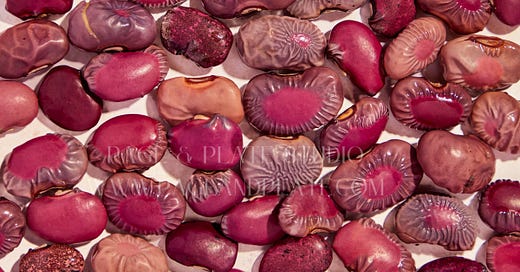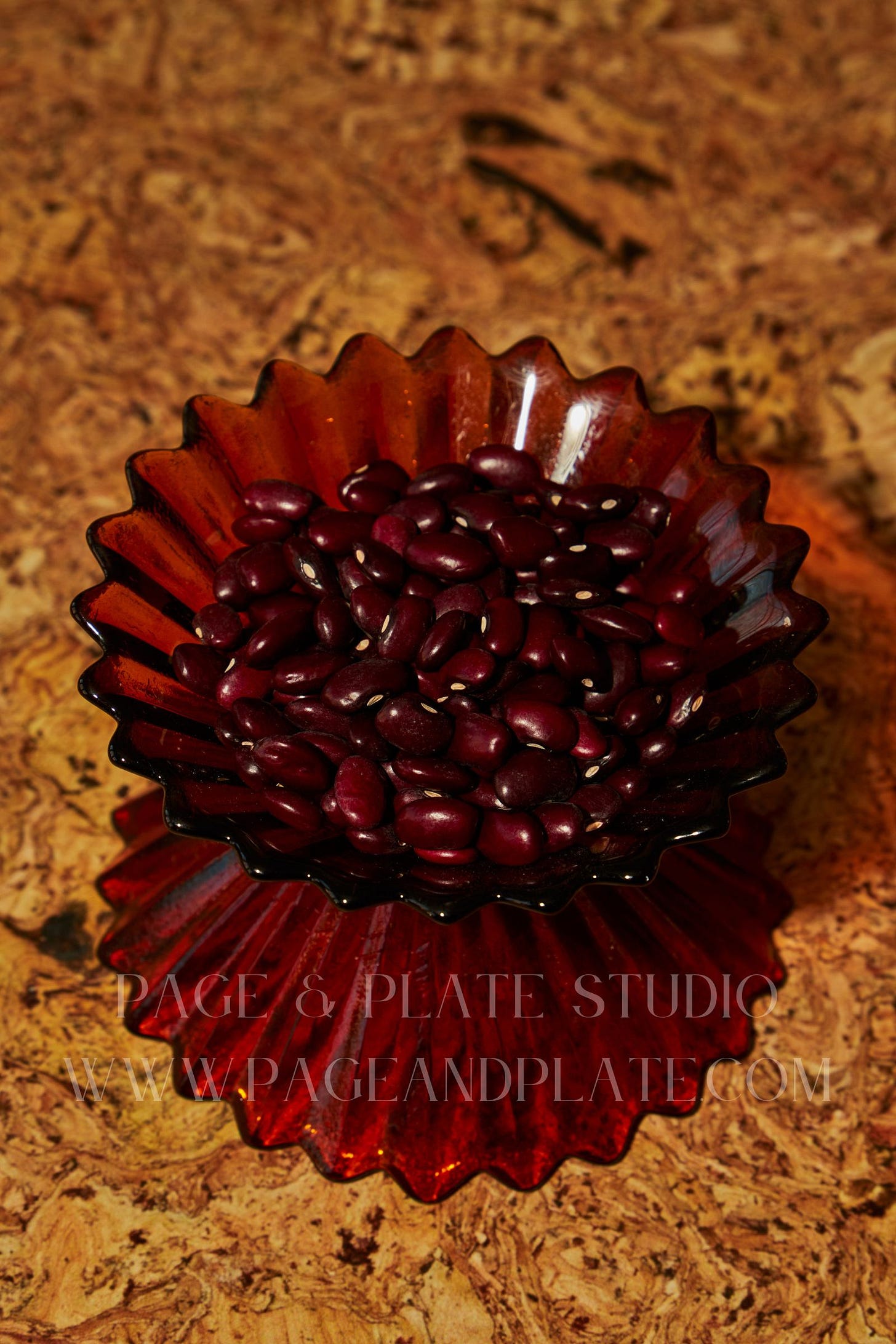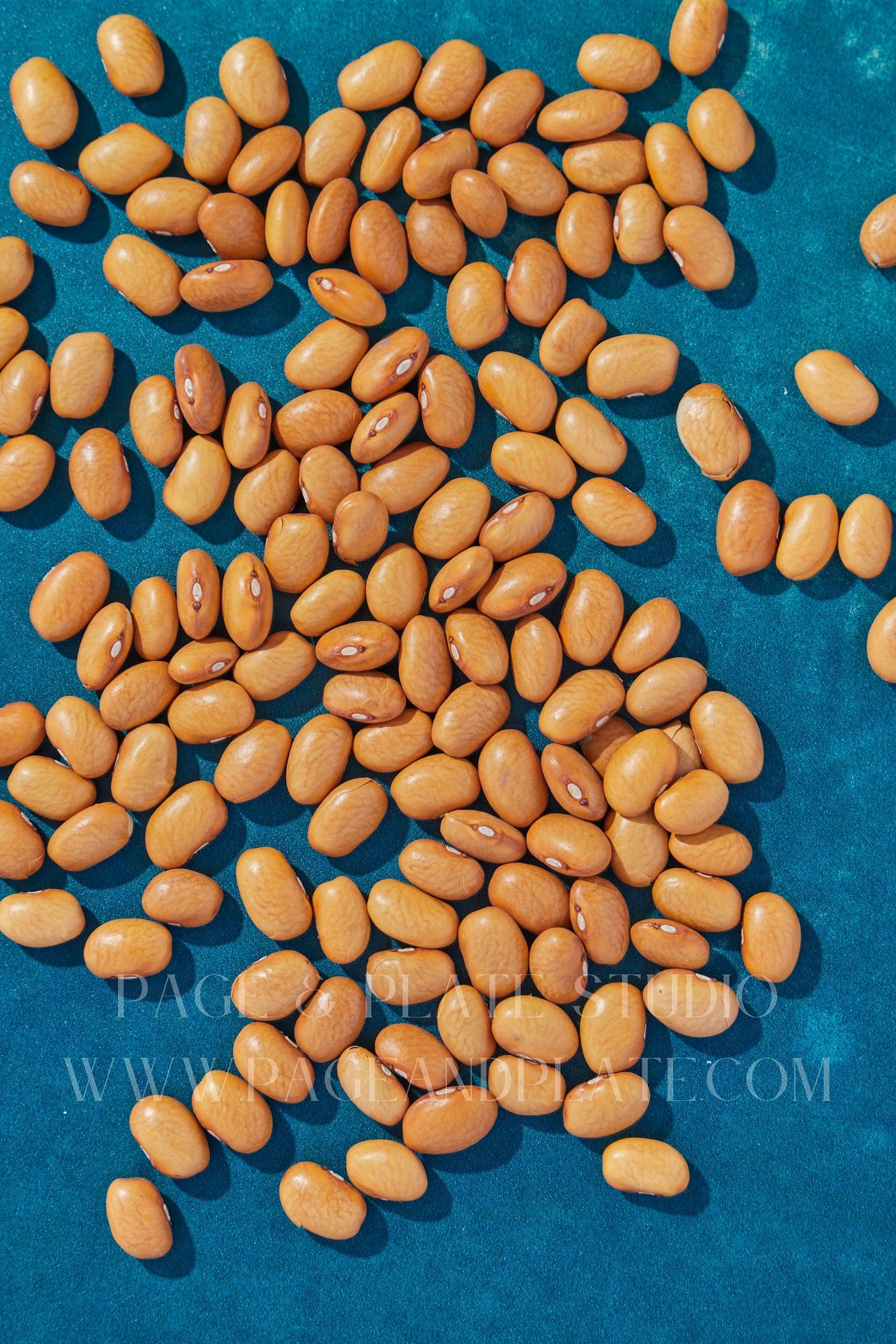Welcome to the long-awaited (maybe just by me?) bean post, a Tuesday post for all subscribers. On Friday, paid subscribers will get a recipe for (what else?) my go-to brothy beans, which you can make with dried or fresh beans. Life is good and beany, my friends.
Beans are my favorite food. I’m told that this has been the case since long ago, when I proudly asked for lima beans for my birthday dinner. Back when I first became a vegetarian, beans seemed like nothing more than an obvious source of protein. They came in a can, had a bad rap, and didn’t taste like much. They needed a lot of love to taste good. And soaking dried beans? Yeah, I wasn’t going to do that. Oh, how the turntables have turned.*
These days, we’re a Rancho Gordo Bean Club household—every quarter, a box of heirloom dried beans shows up in the mail with a wondrous and beautiful assortment inside. This is far and away the best mail day of the month.
Reader, have I said it enough? I love beans! Especially dried heirloom beans. Especially dried heirloom beans that come in a box with custom printed tape and a bespoke little newspaper called The Rancho Gordo Bean Club News. I quite literally preach the good word of beans, as exemplified by this very newsletter that you are reading right now, which is not even the first time I have written about this subject at length.
Much of this newfound enthusiasm for dried beans comes from a certain corner of the food internet. You know the one I'm talking about—the one where Alison Roman and Molly Baz hang out and peddle their cooler-than-cool food opinions; where tinned fish and tuna melts are now desperately hip; where if you’re not careful, these opinions can turn you into a food snob (true story: it happened to me). To be clear, this corner of the internet is my home, and these food snobs are my people. I will be the first to tell you that I am an absolute pain in the ass to eat with, especially at a restaurant that I did not pick. And ordering at a sports bar? Don’t even get me started; I’m unbearable.
My new obsession with these delicious heirloom beans started when the Club was recommended to me by one of these hip cool food celebrities (which one of them it was, I cannot actually remember). I told Colin, who put us on the waitlist, and now we are proud members of the cool kids bean club. I’m proud of this, and in my pride—yes, even in the midst of a whole newsletter about how proud I am to love these beans!—I must pause to consider them in some larger food culture context. Sorry.
I think it’s complicated, to say the least, to consider what’s cool and “in” against the history of food and food trends. Lobster, for example, which was once looked upon as food suited only for poor people, is now considered one of the most expensive foods, reserved for the rich. Of course, this is partly because we humans overfished them and created our own supply and demand issue. But part of why that overfishing occurred is that lobster came into vogue.
Beans have long been considered a cost-effective protein, filling you up for not too much money. John Steinbeck said it best: “Beans are a warm cloak against economic cold.” At the risk of sounding like a boomer, back in my day, I paid $0.85 for a can of beans. When the COVID grocery hike started to become a thing, I noticed the price of a can of beans going up little by little.
The price of beans at my local grocer is now $1.09. And listen: that is what it is. Inflation exists; I live in an expensive market; the world is a different place now than it was in 2014; and I’m fortunate enough to be able to afford beans anyway. What I’m trying to illustrate is what happens when a staple becomes cool.
These days, there are a bunch of products on the shelves next to those plain-Jane canned beans that are much, much more expensive. They’re in cute jars, they (in just some cases!) have more ingredients, and they’re selling for between $3.99 to $4.49. The heirloom beans I myself buy are twice as expensive per ounce as the regular version. To be fair, they are a premium product produced by a company doing good work to support diverse agricultural foodways—that’s why I’m willing to pay more.
But. BUT. I can’t help but notice that as these premium products show up on the shelves, the price of the regular old staple creeps up bit by bit as a result. I haven’t paid as much attention to the price of tinned fish, but I’d be willing to bet that something similar has happened as brands like Fishwife, Scout, and Patagonia Provisions have started appearing on grocery shelves across the US.
I’m not an economic expert. I just grocery shop a lot and pay attention to cute labels because it’s my job. And I’m not even sure what I’m trying to say here, really. I’m just pointing out that something I used to eat in college because it was cheap has now become something I pay a premium for because it’s cool. And I think that’s sort of ironic and delicious and a little bit cringe-y, and wanted to share it.
*dusts off hands and clears throat*
Let’s get back to beans, though! Even if you aren’t buying the expensive heirloom kinds (which, again: they’re the best. You should!), beans are amazing. Delicious, nutritious, easy, cheap(ish). I mean, you really can’t ask for more these days.
Beans are chameleons. They can turn into anything: a braise, a soup, a dip, a crunch. You can serve them warm, cold, or at room temperature. They come in colors as wildly varied as the spring wildflowers. They can be sweet or they can be savory. I’m starting to feel like Dr. Seuss, but you get the idea. Green eggs and ham has nothing on beans.
Beans give me an unshakeable feeling of security: if there are beans in the house, I have an idea of what to make for dinner. If there are canned beans in the house, dinner is already half-way made. They’re perfect, really, and at the end of the day, it doesn’t matter how much they cost or even how cool they are because they’re the delicious dinner that will fill you up.
I could eat beans every night for dinner. There are some weeks where it feels like that’s actually what we do! On Friday, I’ll be sharing some bean recipes with paid subscribers. One is an early-on bean recipe that I used to make when I wanted dinner to cost approximately $2. One is my heirloom bean preparation that I now have down to a science. From there, you choose your own bean-venture.
*this is a Michael Scott quote, please don’t @ me.







